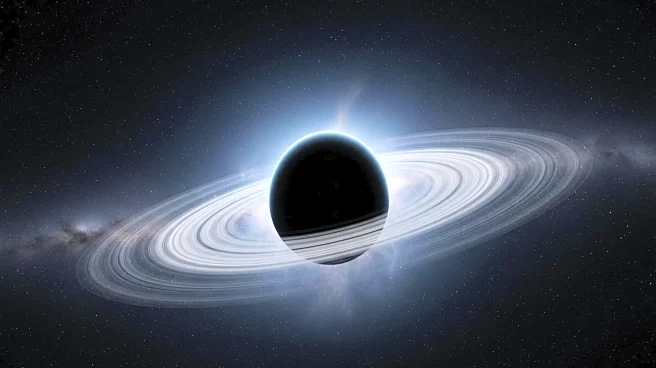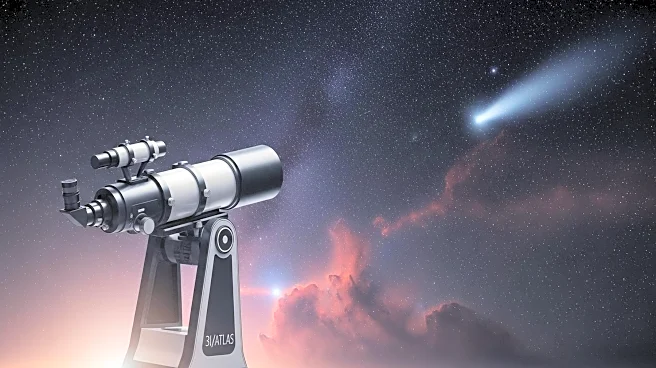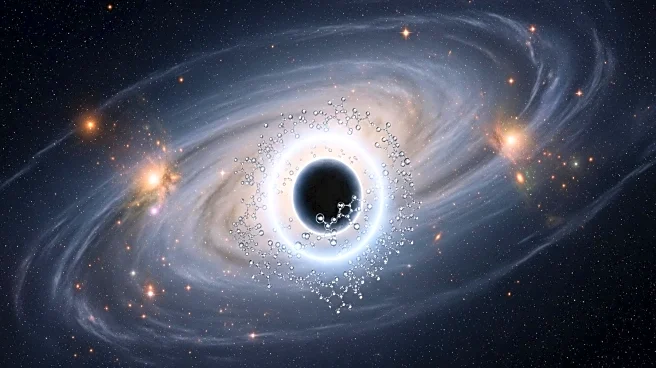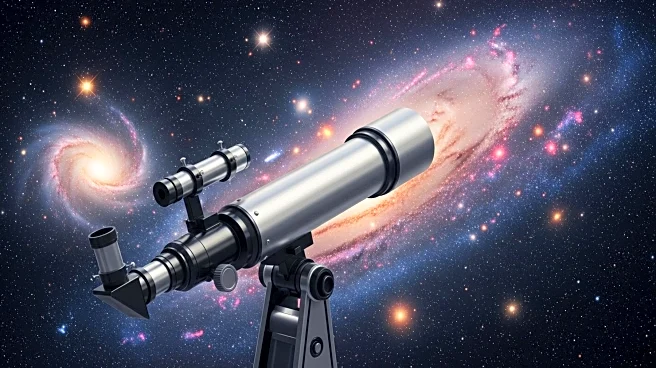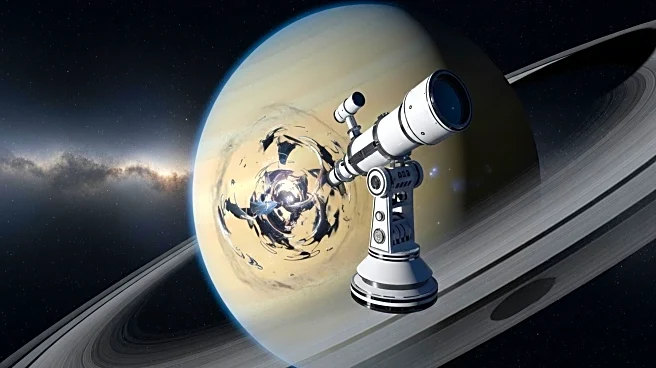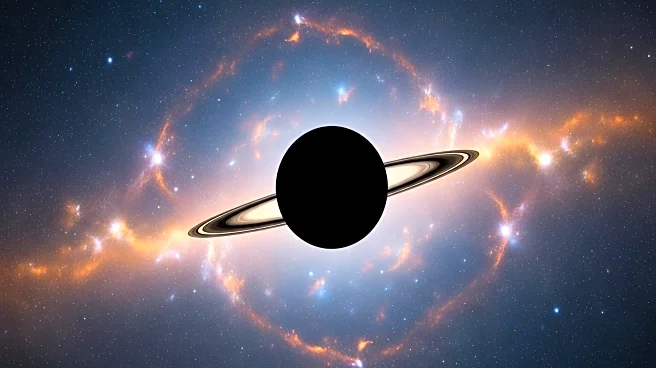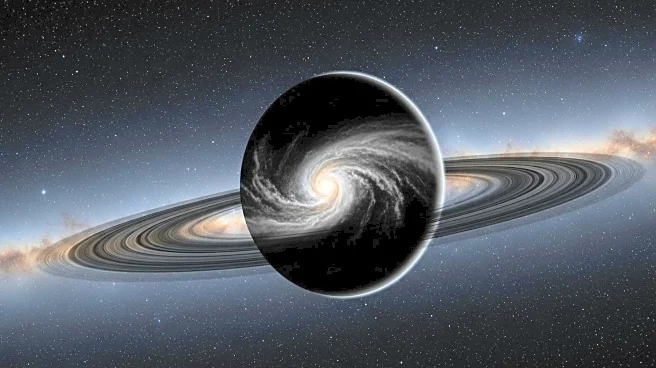What's Happening?
The James Webb Space Telescope has revealed unexpected patterns in Saturn's atmosphere, including bead-like structures and a star-patterned polar cap. These findings were made during a ten-hour observation of Saturn's north pole, using Webb's Near-Infrared Spectrograph. The auroral emissions on Saturn are regulated by the planet's internal winds and currents, rather than external space weather. The discovery includes dark beads spread across the ionosphere, which are stable and dynamically unique to Saturn. The research was conducted by a team of 23 scientists from various international institutions.
Why It's Important?
These findings provide new insights into Saturn's atmospheric dynamics, challenging previous understandings of auroral formations. The ability to observe such detailed atmospheric features could enhance models of atmospheric behavior, potentially improving forecasts for Earth's upper atmosphere. The research also opens avenues for comparative studies with other gas giants, aiding in the understanding of planetary formation and atmospheric processes. The discovery underscores the capabilities of the James Webb Space Telescope in advancing planetary science.
What's Next?
Further research is expected to explore the relationship between the observed bead structures and Saturn's famous hexagon. Scientists aim to model the dynamics of these atmospheric features to better understand their formation. The findings may lead to more detailed studies of other gas giants, utilizing Webb's capabilities to uncover similar atmospheric phenomena.
Beyond the Headlines
The discovery of these unique atmospheric features on Saturn highlights the importance of international collaboration in space exploration. The research combines expertise from early-career and established scientists, showcasing the global effort in advancing our understanding of the solar system. The findings also emphasize the role of advanced technology, like the James Webb Space Telescope, in uncovering previously hidden aspects of planetary atmospheres.

